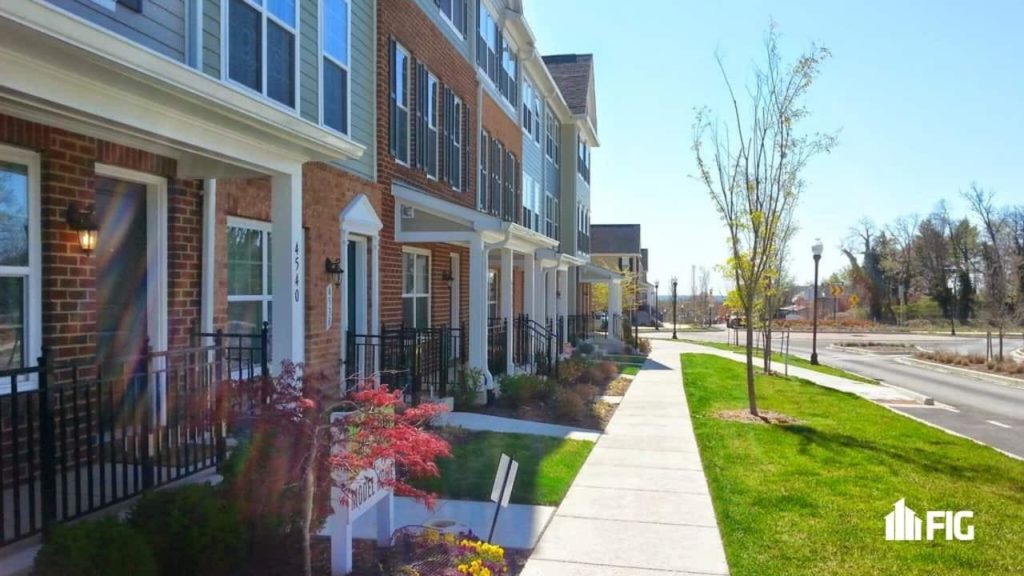
A lot of up-and-coming Americans are preferring to rent rather than own. In a lot of cases, this is due to an inability to purchase a home. In some, it’s a lack of desire. More and more millennials don’t want to be tied down and are happy to rent rather than own as long as it accompanies the proper amenities and convenience they’re looking for.
This all is great for the multifamily industry. Builders and investors are seeing a steady increase in rental demand and the build-to-rent model is continually shining as a go-to investment option. These are just two factors that have lead would-be buyers to hold off on buying single family. In fact, there are many reasons bunched together that have led to this growing trend.
RCLCO Real Estate Advisors estimated that about 700,000 new single-family housing units will be built in the next decade at our current rate of development. While about 6% of new single-family homes are built specifically to be rented.
“That isn’t going to be enough, considering the projected growth in demand for single-family rental units. That means that there will be a strong opportunity for developers of this kind of product in the coming decade.” – Bisnow
In Q3 2020, the U.S. Census Bureau reported that 67.4% of the nation’s households owned their household. While this is a little bit higher than the mid-2010s, it’s far below the almost 70% ownership that existed in the mid-2000s. 35% of all U.S. rented housing units are single-family units (National Bureau of Economic Research). How many single-family homes is that? More than 12 million. Corporate ownership of these properties is becoming more common. However, a lot of them are owned by individual investors, ie. homeowners that rent out individual homes.
Now in 2021, we’re starting to see (and we have been for a few years now) a generation that has advanced in their careers and in a lot of cases can afford to buy a home but choose not to. Their families are growing and they want to live in a townhome or detached living space. They’re ready to move out of that small apartment into something that is 2-3 beds, 2 baths at least. But millennials are also old enough to remember the crash a little over a decade ago. They’re continually choosing to rent rather than buy.
“They saw what happened back in 2007, and they don’t want to be tied down to a 30-year mortgage. They want to be mobile in their work environment, be able to get up and move. So from a millennial standpoint, a rental house that gives them space and amenities is an attractive solution. Besides, renting doesn’t have a negative stigma anymore.” – Bisnow
What kind of developments are trending right now?
A lot of up-and-coming developments are matching the current demand for communities built for rent rather than sale. Some of these take the form of luxury, detached or attached townhome-style units. There’s a broad spectrum from duplexes to fourplexes. These communities have a focus on location near centers of work for the tenants, and either has or are near amenities.
“For-rent housing development includes what might be called “horizontal apartments. That means the unit sizes are very similar in size to traditional apartments, but they are slightly detached from one another or in the form of townhouses or duplexes. That kind of development has been around for many years.” – Bisnow
Here tenants can enjoy the perks of having a community pool or clubhouse, without the time-consuming tasks of things like caring for a large yard. Whether these communities thrive long term often depend on whether the builders are willing to focus on a rental product versus a short-term sale model. As an investor, there are many benefits to owning in these types of communities. A detached 3-bedroom single-family home, for example, would rent at a similar price to a townhome in one of these communities, but is often more work to maintain, and wouldn’t have the benefits of amenities like a neighborhood pool.
“We’re not seeing too much of these kinds of developments in California, for example, with its impact fees and regulations. Build for rent is going to happen in places where for-sale housing development is strong as well, such as Arizona and Texas. Places with strong local economies, developer-friendly governments, and available land.” – Bisnow
